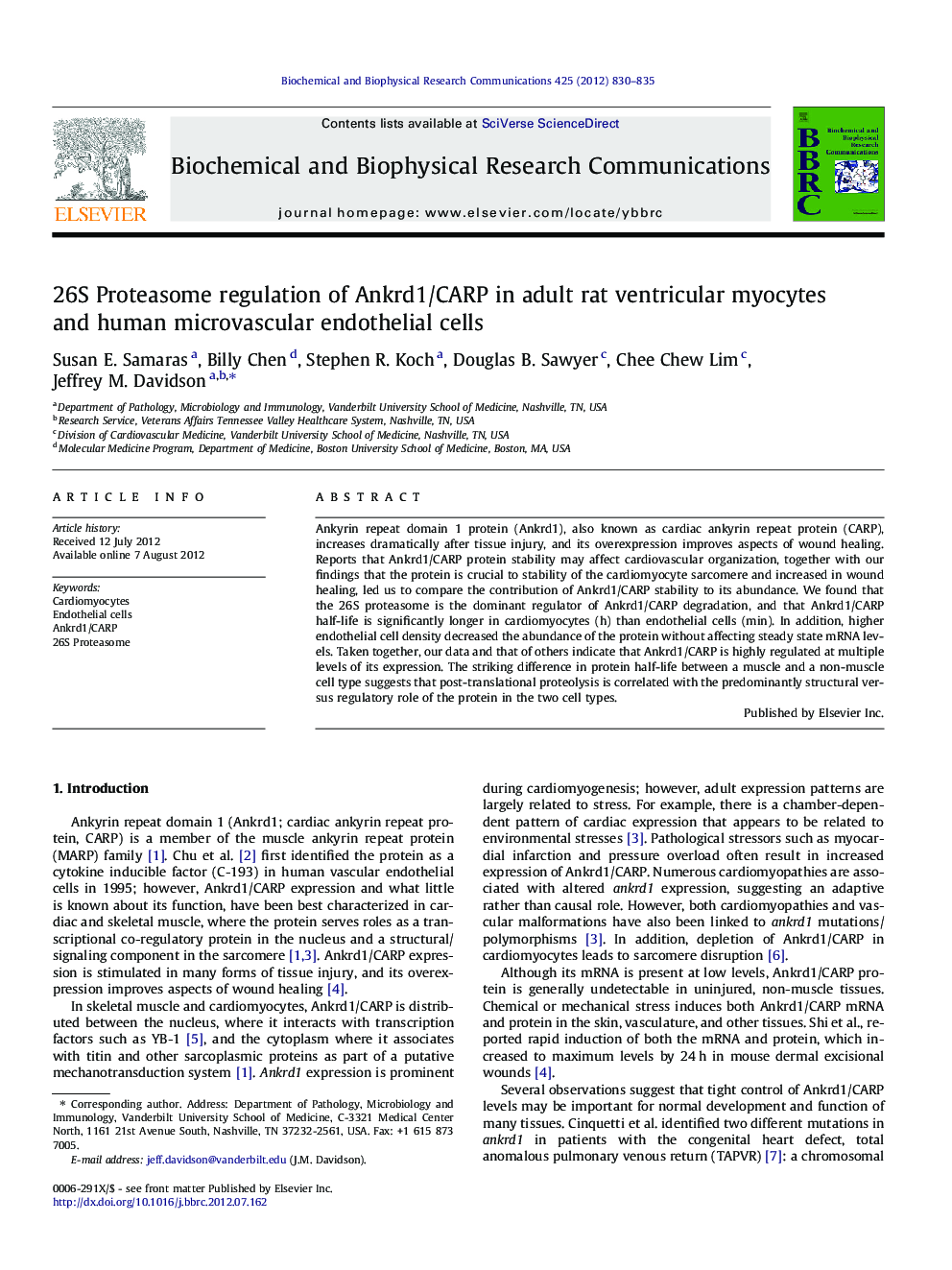| کد مقاله | کد نشریه | سال انتشار | مقاله انگلیسی | نسخه تمام متن |
|---|---|---|---|---|
| 1929615 | 1050469 | 2012 | 6 صفحه PDF | دانلود رایگان |

Ankyrin repeat domain 1 protein (Ankrd1), also known as cardiac ankyrin repeat protein (CARP), increases dramatically after tissue injury, and its overexpression improves aspects of wound healing. Reports that Ankrd1/CARP protein stability may affect cardiovascular organization, together with our findings that the protein is crucial to stability of the cardiomyocyte sarcomere and increased in wound healing, led us to compare the contribution of Ankrd1/CARP stability to its abundance. We found that the 26S proteasome is the dominant regulator of Ankrd1/CARP degradation, and that Ankrd1/CARP half-life is significantly longer in cardiomyocytes (h) than endothelial cells (min). In addition, higher endothelial cell density decreased the abundance of the protein without affecting steady state mRNA levels. Taken together, our data and that of others indicate that Ankrd1/CARP is highly regulated at multiple levels of its expression. The striking difference in protein half-life between a muscle and a non-muscle cell type suggests that post-translational proteolysis is correlated with the predominantly structural versus regulatory role of the protein in the two cell types.
• The 26S proteasome regulates Ankrd1 levels in cardiomyocytes and endothelial cells.
• Ankrd1 protein degrades 60-fold faster in endothelial cells than cardiomyocytes.
• Differential degradation appears related to nuclear vs. sarcolemmal localization.
• Endothelial cell density shows uncoupling of Ankrd1 mRNA and protein levels.
Journal: Biochemical and Biophysical Research Communications - Volume 425, Issue 4, 7 September 2012, Pages 830–835